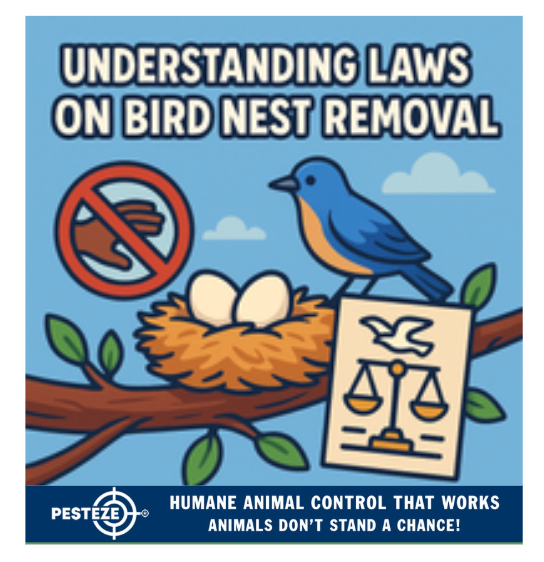UNDERSTANDING LAWS ON BIRD NEST REMOVAL

UNDERSTANDING LAWS ON BIRD NEST REMOVAL
SUMMARY
Removing bird nests without knowing the law can lead to fines and harm protected species. This guide explains the legal aspects of bird nest removal, ensuring you stay compliant and humane.
FEATURES
-
Know protected species: Many birds are legally safeguarded.
-
Timing matters: Nest removal rules vary by breeding season.
-
Federal protections: The Migratory Bird Treaty Act applies to most birds.
-
Local regulations: State and city laws may add further restrictions.
-
Permit requirements: Special permissions are needed in some cases.
-
Safer alternatives: Legal, humane deterrents help prevent nesting.
GUIDE DESCRIPTION
Bird nests may sometimes appear in inconvenient spots—gutters, chimneys, vents, or near doorways. While it might seem harmless to remove them, doing so can violate wildlife protection laws. That’s why understanding the laws on bird nest removal is essential for both legal compliance and ethical responsibility.
One of the most important things to know is that many bird species are legally protected. In the United States, the Migratory Bird Treaty Act (MBTA) safeguards over 1,000 species. This law prohibits the destruction of nests, eggs, or young birds of these species without a federal permit. Even if the nest seems abandoned, removal can still be illegal.
Timing plays a critical role. During breeding season, when eggs or chicks are present, nest removal is almost always prohibited. Outside of nesting season, empty or inactive nests may sometimes be removed, but rules vary depending on species and location.
Beyond federal law, local and state regulations may impose stricter requirements. Some states have additional protections for specific species or habitats, and certain cities enforce wildlife-friendly ordinances. It’s important to check with your local wildlife agency before taking action.
In special circumstances—such as nests posing a direct hazard to human safety—permits may be required. Wildlife authorities may grant these permissions if the nest’s location presents fire risks, structural damage, or public health concerns. Without proper authorization, however, removal could result in significant fines.
Instead of risking legal consequences, consider safer alternatives. Prevent nesting by sealing vents with covers, installing deterrents like reflective tape, or using sloped ledges that discourage birds from settling. These methods help you avoid unwanted nests in the first place while staying compliant with the law.
Understanding bird nest removal laws ensures you protect wildlife and avoid legal trouble. When in doubt, always consult professionals or wildlife authorities before acting. By respecting these laws, you play an important role in maintaining the balance between humans and nature.
- Saneeth Thota


Comments 0